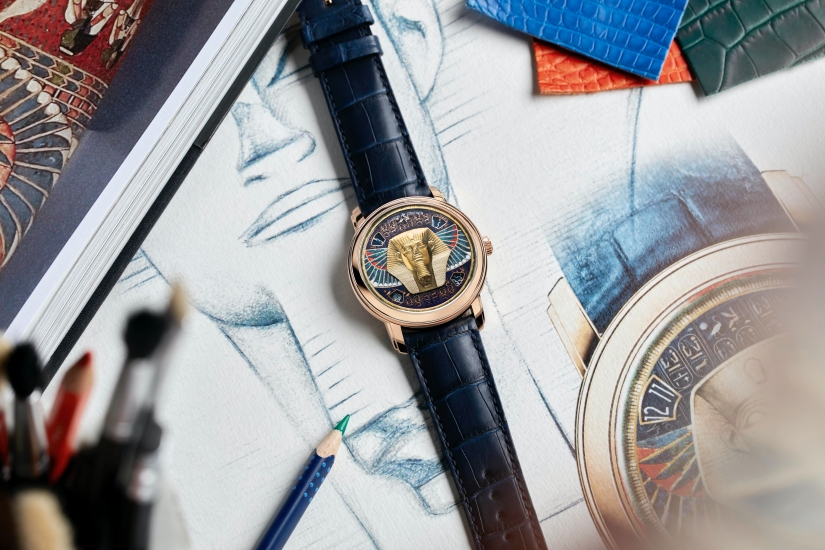Since 2019, Vacheron Constantin has partnered with the Louvre and launched several joint projects. At the end of 2020, they even presented a unique watch experience at an auction with Christie’s. Moving into 2022, they are once again collaborating, drawing inspiration from the ancient collections of the Louvre to create a themed collection of four watches, based on the Métiers d’Art Masterpieces series, called Tribute to Great Civilisations.
In this collaboration, Vacheron Constantin, in close collaboration with the Louvre team, selected different eras such as the period of Cyrus the Great of the Persian Empire, the golden age of ancient Egypt, the Hellenistic civilization of ancient Greece, and the rise of Emperor Augustus of the Roman Empire. From each great civilization period, a precious artifact from the Louvre collection was chosen, and through the craftsmanship of Vacheron Constantin watchmakers within a diameter of less than 40mm, they interpreted the brand new Métiers d’Art Art Master series design, creating exquisite decorative arts from each era.
Grand Sphinx of Tanis
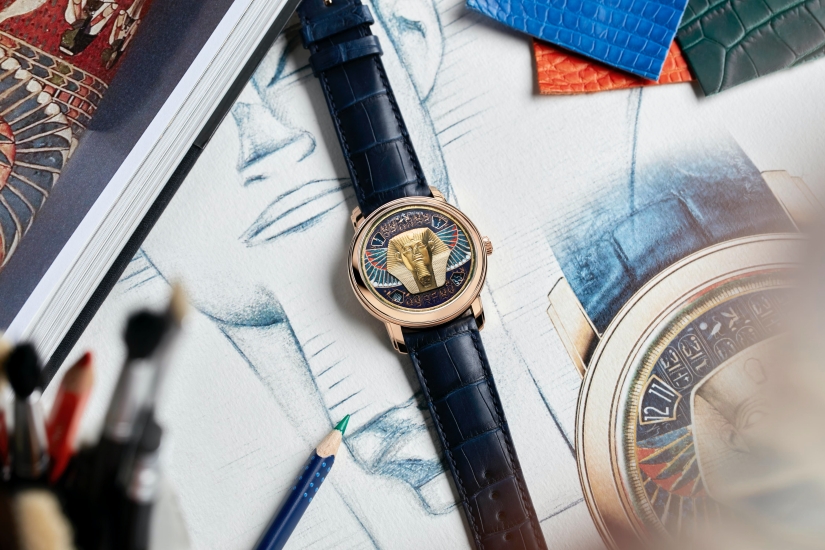
The term “Sphinx” originates from Greek and is commonly used to refer to the ancient Egyptian lion-bodied, human-headed statue. In the past, some have connected it with the Egyptian term “shesep-ânkh”. In a broader sense, the term represents a statue, which in the Egyptian concept can be interpreted as a “vivid image” and also carries a royal symbol meaning. Historically, they were often neatly arranged on both sides of the religious path leading to temples.
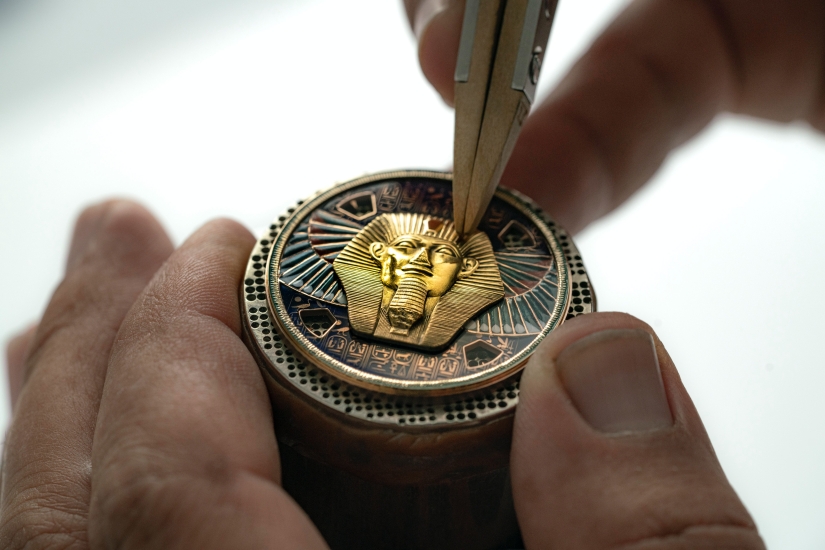
In this creation, the brand watchmaker showcases the “lion-headed man” through the exquisite craftsmanship of cutting gemstones. In the production process, the master craftsmen not only face the challenge of shaping highly expressive facial patterns within a small space when dealing with the gold inlay of the lion-headed man’s head, but also need to present the large jaw and beard components in tiny gaps. After being filed, sandblasted, and polished, the material is further subjected to firing and hand coloring by the master craftsmen to highlight the deep relief of the sculpture.
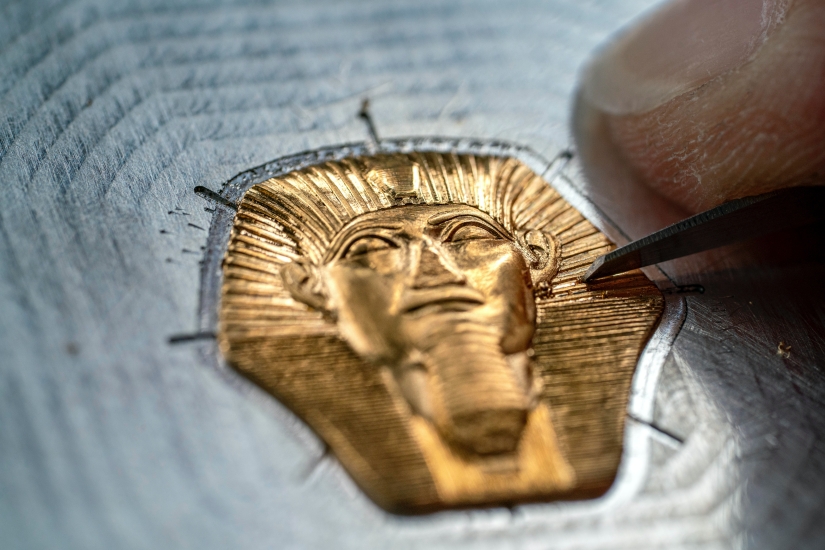
Lion de Darius Great Lion
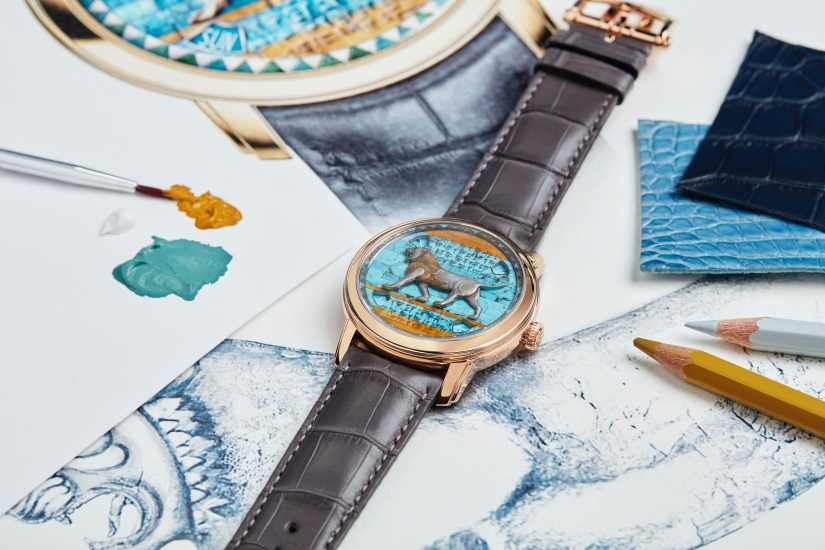
The relief of the lion is one of the decorative elements found at the Susa Palace site, discovered in its original location, welcoming visitors in the first palace courtyard. This decoration is an important symbol of the Persian Empire’s palace image, more commonly seen in the palace architecture of the earlier Assyrian Empire and Babylonian Kingdom.
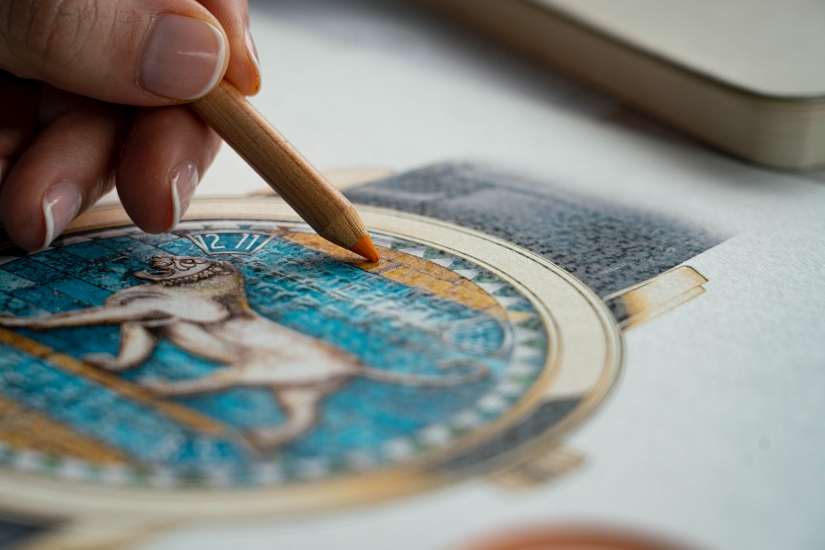
The lion, being a royal animal with sacred attributes, is commonly found in the royal gardens and hunting treasure areas of the Persian and Assyrian empires. Therefore, the male lion relief on the eaves proclaims the royal power with the image of the king of beasts. Watchmakers used silicon enamel tiles mixed with lime mortar to create the male lion relief, presenting a model of the art style of the Achaemenid Persian Empire, reproducing the noble original with lifelike animal muscles and mane, highlighting the infectious power and status of the sacred male lion.
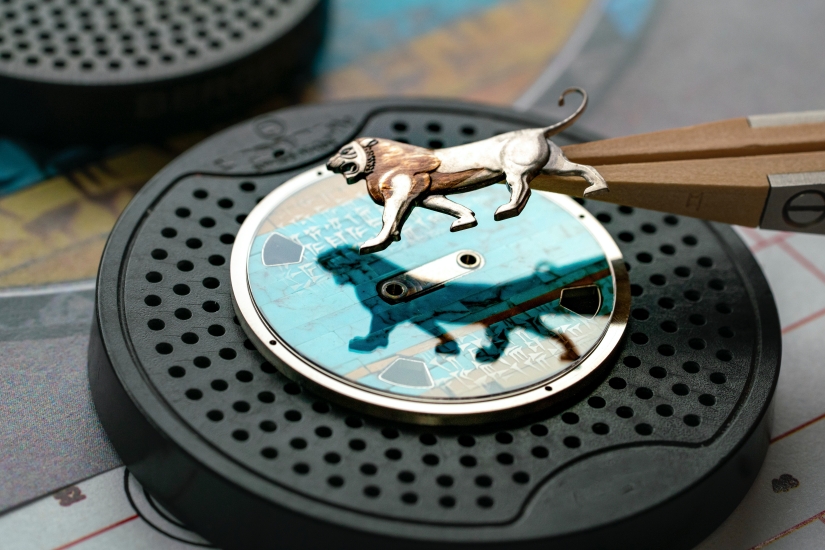
Victoire de Samothrace Goddess of Victory
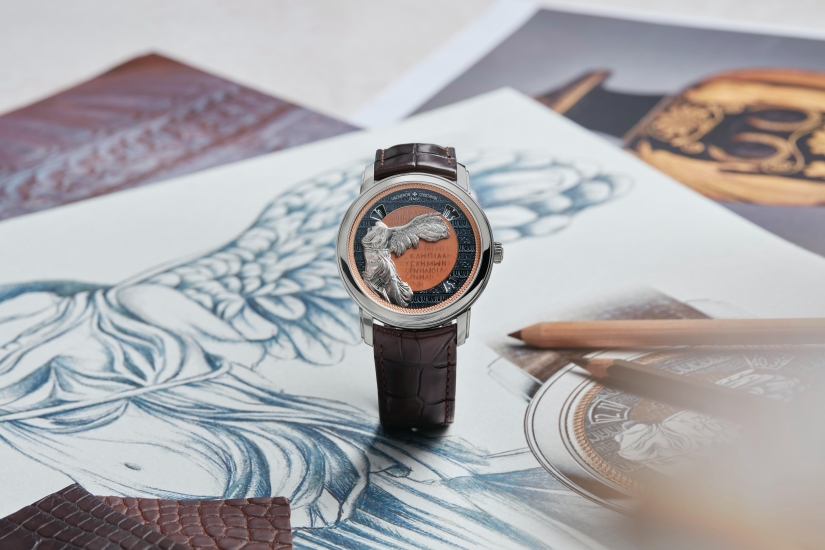
In Greek, the original name of the goddess of victory is Nike (Niké). This statue of the victory goddess in Samothrace is an unparalleled masterpiece in the tradition of Greek Hellenistic civilization statues, with exquisite marble sculpting skills, clever and versatile structural design, and a lifelike depiction of the victory goddess standing solemnly at the bow of a warship. The sculptor’s name is unknown, but their extraordinary craftsmanship inevitably brings to mind the figures of the Gigantomachy frieze decorating the Zeus Altar in Pergamon (180-160 BC). These two works are evidence of the flourishing of sculpture art in the 2nd century BC.
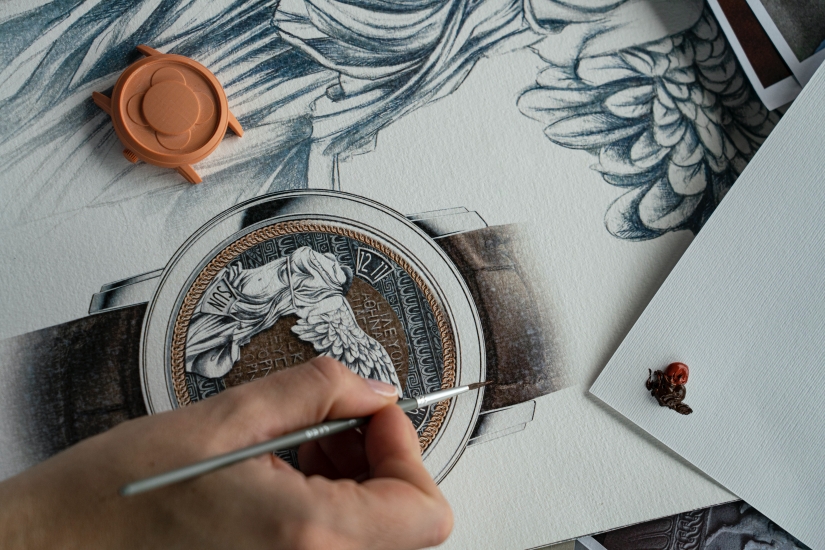
Considered one of the offerings in the temple of Samothrace, this piece symbolizes a period of competition for control of the Eastern Mediterranean. People offered numerous gifts to thank the benevolent gods for their protection and to commemorate naval victories or successful escapes. Associated with the statue of Victory, it refers to the battles of Side and Myonnesos on the coast of Asia Minor between 190 and 189 BC. In these battles, the kingdom of Pergamon allied with the Rhodians and Romans to defeat their enemies, Antiochus and the Macedonian kingdom. The Victory statue’s dress billows in the wind, with flowing fabric forming distinct folds between her legs. Replicating all these subtleties presents a great challenge for the skilled craftsmen.
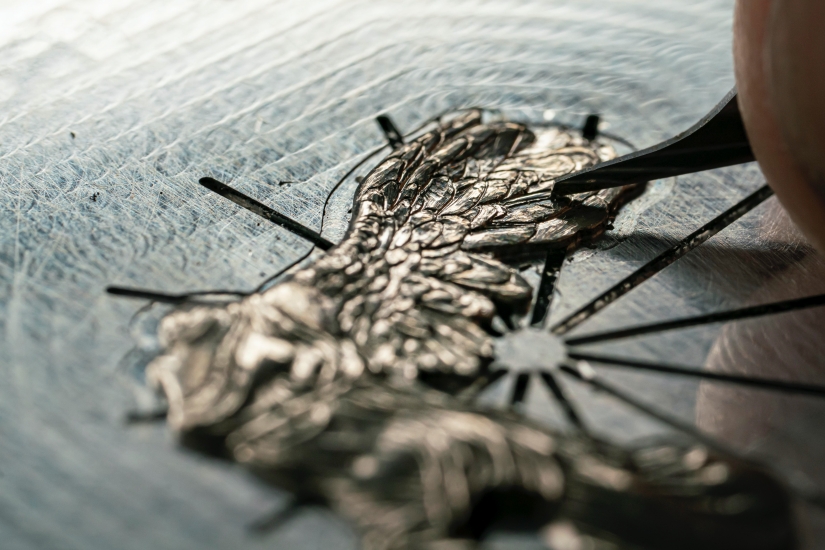
Augustus Bust
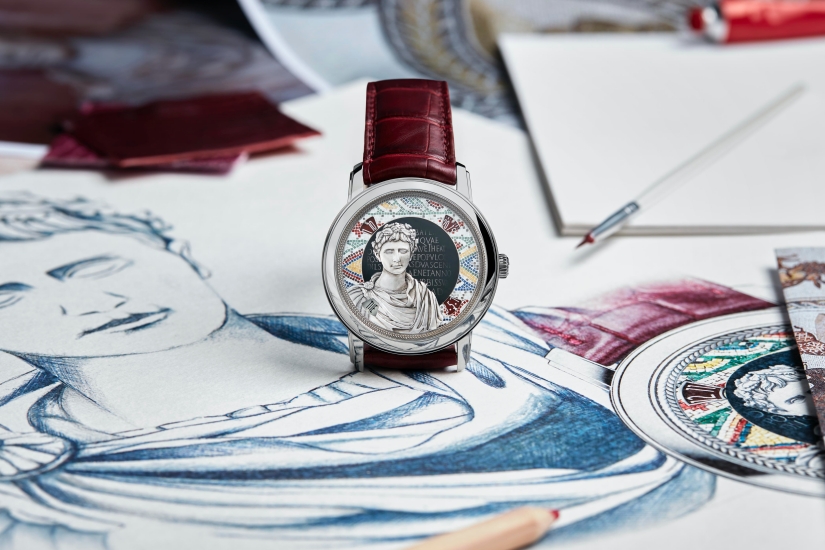
Compared to other crowned statues, Augustus, wearing an oak leaf wreath, exudes a mature aura in this marble bust. In this timepiece, the master craftsmen intricately recreated the bust of Augustus on the dial using gold carving and inlay techniques, presenting a striking character charm. The cloak hangs outside the chest armor, connected by a clasp, allowing the folds to echo the layers of the oak leaf crown wrapped around the curly hair.
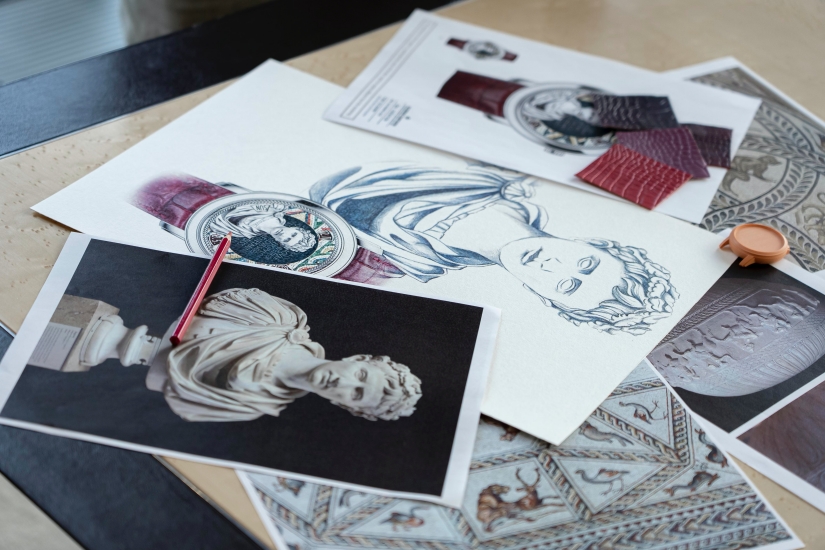
In this state, the bust of Augustus is presented, a moment often associated with the honorary coronation in the Senate in 27 BC. At the age of 36, Augustus marked the arrival of the Roman Empire era, yet the facial features in the statue appear to be over 50 years old. Like many portrayals of such figures, the emperor’s hair is thickly laid on his forehead. From the statue, we see a monarch gradually entering old age, with a slightly weary appearance, yet still exuding dignity and solemnity. Just as the ancient Roman mint workshops issued coins throughout the empire, the features of Augustus have been idealized in the sculpted bust. The armored chest in the bust also showcases the military image of Emperor Augustus, emphasizing that his power comes from the will of the citizens, even though it may not be entirely accurate.
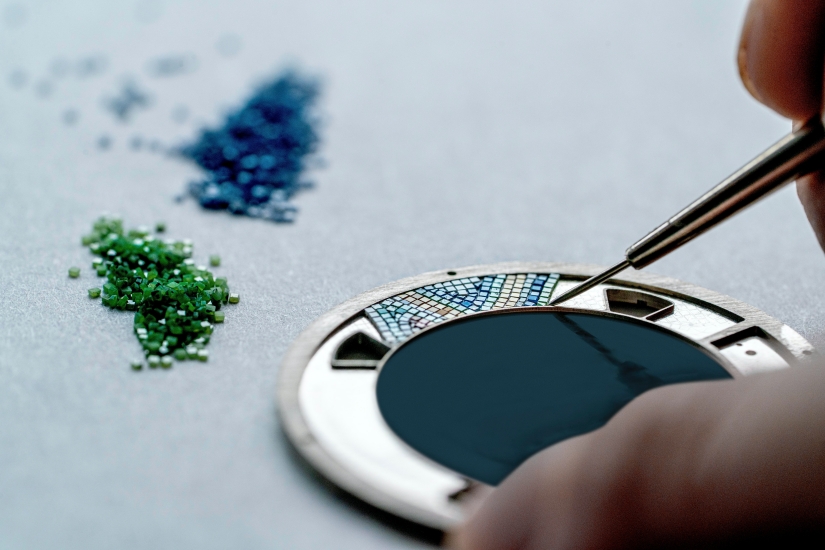
This masterpiece spans four civilizations, watchmaking masters bring together stunning eras through meticulous craftsmanship and rare artisanal skills in Vacheron Constantin’s timepiece masterpieces. While showcasing the brand’s watchmaking craftsmanship, it also echoes the brand with this great moment in history. Vacheron Constantin’s Métiers d’Art Art Masterpieces series will release only 5 pieces for each Tribute to Great Civilisations watch under four main themes.
資料及圖片來源:Courtesy of Vacheron Constantin

